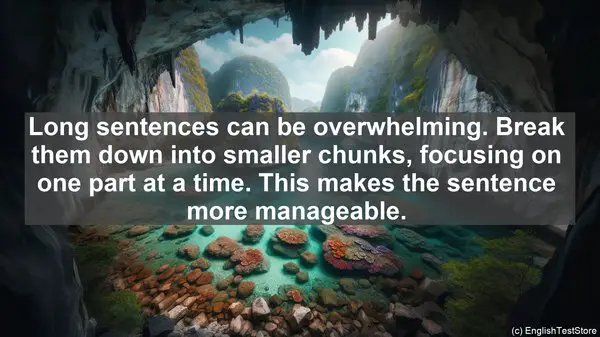Introduction
In today’s lesson, I’ll be discussing a crucial aspect of the IELTS Reading section: understanding complex sentences. Many students find these sentences challenging, but with the right strategies, you can decode them effectively. So, let’s dive in!
1. Identify the Main Clause
Complex sentences often have multiple clauses. Start by identifying the main clause, as it provides the central idea. This will give you a clear direction while reading.

2. Pay Attention to Connectors
Connectors like ‘although,’ ‘however,’ and ‘because’ indicate the relationship between clauses. Understanding these connectors helps you grasp the sentence’s overall meaning.
3. Break Down the Sentence
Long sentences can be overwhelming. Break them down into smaller chunks, focusing on one part at a time. This makes the sentence more manageable.

4. Look for Keywords
Keywords are vital in complex sentences. They often convey the main idea or provide context. Underline or highlight them to stay focused.
5. Use Context Clues
Sometimes, the meaning of a complex sentence can be inferred from the surrounding text. Pay attention to the context to understand it better.
6. Use Punctuation as a Guide
Punctuation marks like commas and colons can indicate breaks or transitions in a sentence. They help you understand the sentence’s structure.
7. Practice Skimming and Scanning
Skimming and scanning are essential skills for the IELTS Reading section. They allow you to quickly locate information in complex passages.
8. Read Regularly
Reading regularly, especially academic texts, improves your familiarity with complex sentence structures. It also enhances your vocabulary.
9. Take Advantage of Practice Tests
Practice tests not only familiarize you with the IELTS format but also expose you to a variety of complex sentences. Analyze the correct answers to understand their structure.
10. Seek Guidance
If you’re struggling with complex sentences, don’t hesitate to seek guidance from a teacher or tutor. They can provide personalized strategies and feedback.
